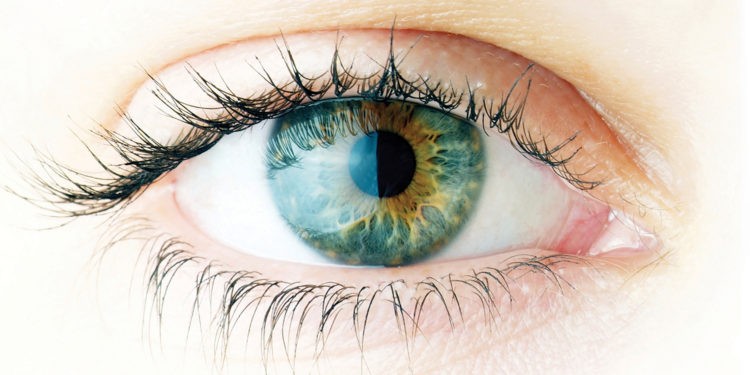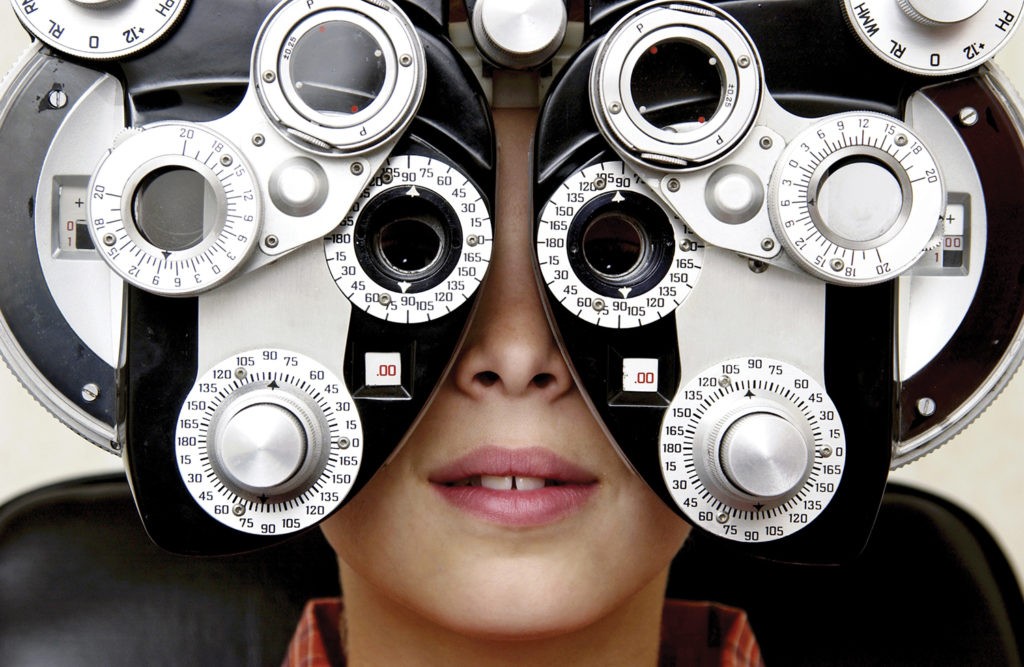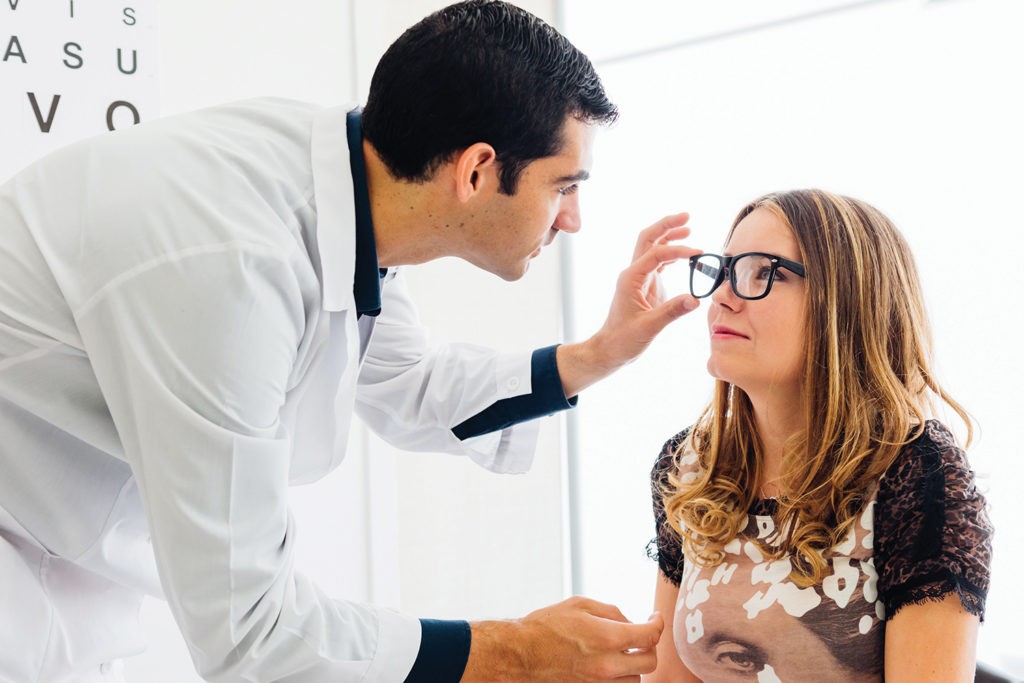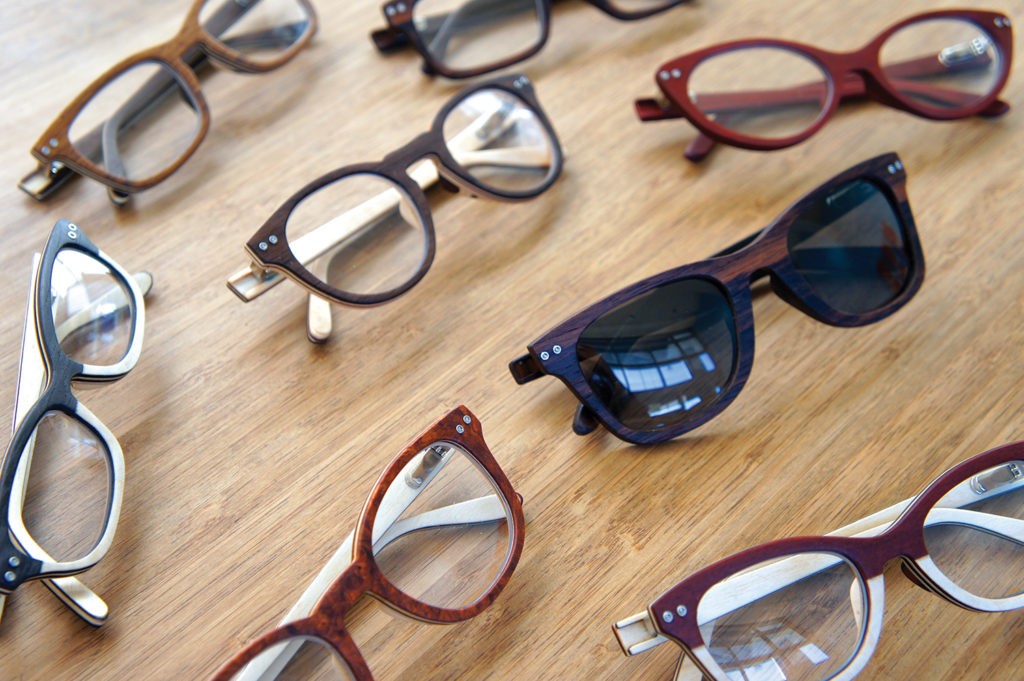Eye Health: A Lifelong Endeavor

Millions of Americans do not give their sight a second thought until they start to develop vision problems well beyond prevention, and sometimes beyond correction. However, with proper vigilance our eye sight can and will serve us well throughout our lifetime.
Today, two in three, or 64% of American adults, report having at least one or more serious vision problems such as blurry or double vision or seeing flashes of light, yet most of them fail to have a medical eye exam according to a survey conducted by the American Academy of Ophthalmology.
The problem with eye health is further compounded by how Americans are protecting their eye sight at work – or aren’t. In addition to the 2,000 daily job-related eye injuries requiring medical treatment that occur daily, jobs requiring extended use of the computer put millions of Americans at risk of dry eyes and eye strain. The vast majority of these injuries and vision problems could be completely avoided with proper eye care.
The U.S Centers for Disease Control and Prevention’s (CDC) National Eye Institute for Occupational Safety and Health (NIOSH) estimates that 90% of workplace eye injuries could have been prevented through the use of proper eye wear. The Bureau of Labor Statistics (BLS) further reports that three in five injured workers were not wearing eye protection, or wearing the wrong kind or insufficient eye protection.
Those using the computer extensively for work are also at serious risk, yet fail to make changes that will protect their vision.
Those using the computer for as little as three hours a day experience computer related eye problems such as blurred or double vision, as well as burning and dryness, all of which interfere with work performance.
Most people are not aware of eye dangers yet encounter them in the workplace and outside of the workplace daily. Some of these dangers include small particle abrasion, chemical splashing, and UV radiation burns.
“Wearing sunglasses is important to protecting the eyes against harmful UV rays. Smoking can also be detrimental to eye health and increase risk of cataracts and macular degeneration,” Dr. Anne Wishna of Grin Eye Care in Olathe, Kansas explains.
Though there seems to be a lack of awareness, the impact is quite serious. According to preventblindness.org, 10-20% of the total amount of work related injuries will cause permanent vision loss. They also report that the right eye protection and preventative measures could lessen the severity or even prevent 90% of eye injuries.

In the Blink of an Eye
One of the simple but unconscious effects of extended computer use is a reduced frequency of blinking, which greatly adds to the problem, says Dr. Emily Enright, also of Grin Eye Care.
“One of the most shocking facts about workplace eye health involves how much we are blinking. The average person blinks about 18 times per minute, but the blink rate is cut in half when looking at a computer or digital screen. Decreased blinking can cause dry, irritated and tired eyes. It is important to follow the 20/20/20 rule: for every 20 minutes you spend looking at a screen, take 20 seconds to look at something 20 feet away. It is also important to eat healthy and stay hydrated throughout your work day,” she explains.

Simple Solutions Can Protect Our Eyesight
Approximately 60% of those sustaining eye injuries were not wearing appropriate protective eye gear at the time of the injury. Because most people are not aware of the dangers, most people do not think they need protective wear for many activities.
One misconception is that you only need eye protection in cases where high impact accidents are possible. However, industry standards now recognize two classes of safety lenses, traditional or basic impact lenses and high impact lenses which provide protection to hazards of high velocity and mass. Traditional eye safety wear protects against such things as chemical splash or even road grit when bike riding.
Sunglasses are also a form of eye protection that should be worn daily. While most people think about the sun’s harmful rays on a warm sunny day, UV light is present every day, and can be just as damaging. UV rays also come from many directions. Once radiated from the sun, the UV rays bounce off of and are reflected by other surfaces such as sand, snow, cars, sidewalks, buildings and other bright surfaces. Certain common medications, such as birth control pills, diuretics, tetracycline, and sulfa drugs also increase the eye’s sensitivity and therefore its vulnerability to ultraviolet light. Another important but little known fact is that exposure to UV radiation has a cumulative effect on the eyes and damage today combines with damage tomorrow for greater problems in the future.

Make the Change for Better Eye Health
Some solutions for better eye health are a matter of making small adjustments to our environment or habits.
“It is important to consider overhead lighting, how far you are sitting from the computer screen, your posture in the chair you are using, the type of computer monitor you have and how often you are taking breaks from looking at the screen,” Dr. Enright furthers.
Many habits contribute to the problem, she says.
“There are several workplace habits that can cause excessive strain on the eyes. It is important to make sure you are set up for success at your work space. Keep your computer monitor at or just below eye level, make sure your monitor is flat and not tilted, set your screen so it is at a “high five” distance from where you’re sitting, reduce overhead lighting and use a chair that supports your back and keeps your body upright. If you find that you are leaning towards your computer screen, it may be time for updated glasses or contact lens prescription. By practicing healthy ergonomics at work, you can reduce dryness, irritation, headaches, fatigue and neck or back pain.”

Proper Eye Care Protects Our Sight
Getting regular eye care can protect our sight and much more says Dr. Wishna.
“The eyes are a window to the overall health of the body. Many conditions, including diabetes, high blood pressure, and even some cancers can be detected during a thorough eye exam. Additionally, many eye conditions can be controlled if detected early. Annual eye exams are the best way to ensure you will have excellent vision throughout your life.”
A healthy lifestyle is also a key component to protecting your eye health she shared.
“Eating a healthy diet including green, leafy vegetables and omega-3 fats protects the eyes from such things as macular degeneration, dry eye, and diabetic retinopathy.”
A type of polyunsaturated fat, Omega-3s are essential because they body cannot manufacture them and they must be obtained through the diet by eating Omege-3 rich foods such as fatty fish, nuts, and plant-based oils.
Unfortunately, there is one mistake that is most common to all – assuming they do not need eye care.
“The biggest, and most tragic mistake people make is assuming that if they can see well, their eyes must be healthy. Many eye conditions can begin without symptoms at all. Getting your eyes checked regularly is the most important factor in protecting your eye health,” concluded Dr. Wishna.
Protecting your eyesight is one of the most important things you can do to help maintain your quality of life, and serious problems start much earlier than most people realize. In fact, some type of sight-threatening eye problem affects one in six adults age 45 and older. Even more concerning is that the risk of serious vision loss only increases with age. By the year 2020, reports a study by the American Academy of Ophthalmology, more than 43 million Americans will develop age-related eye diseases that could have been prevented or whose severity could have been significantly lessened with proper care and early intervention. Eye care is much more valuable than people realize and proper care can protect something you can’t get back.
For more information about eye care, please visit the American Academy of Ophthalmology at aao.org or call them at 415.561.8500 and visit the U.S Centers for Disease Control and Prevention’s National Eye Institute for Occupational Safety and Health at cdc.gov/niosh or call 800-232-4636. For information on Grin Eye Care contact grineyecaremanager@gmail.com. Or call 913-829-5511.



